THE EROTICA DIARIES (ripresi dal sito www.sheppettibone.com/sp_erotica_diaries.htm)
I remember when Madonna and I first started working together on Erotica. We were listening in my home studio to one of the first songs and I turned to her and said “It’s great, but it’s no Vogue.” She told me that not every song could be Vogue – not every cut could emerge as the top-selling record of all time. She was right, but I pressed my case anyway: “I guess I’m always trying to out-top myself,” I told her, “the next thing should be bigger than the last.” Madonna just turned and looked me straight in the eye. It had been a long time since I’d been star-struck by her, but she was glowing differently now.
“Shep,” she began, “no matter how fierce something is, you can’t ever do the same thing twice.” She sat down to record the final vocals on Erotica and looked out onto the terrace and into the New York City night. “Ever,” she repeated.
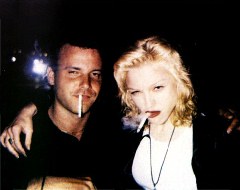
Diary Entry #1 July-August 1991
I wanted to start writing again. The last project I had worked on with Madonna was The Immaculate Collection but that was just a month and a half of working with that QSound stuff. I knew I could do something great after Vogue and Rescue Me so I just started putting tracks together with my assistant, Tony Shimkin. I wanted to have a few songs for Madonna to listen to when I went out to Chicago, were she was filming A League Of Their Own. I had no idea that she was planning to do an album at that time, but then again, neither did she. I arrived in Chicago on July 8th and gave Madonna a cassette. I told her to give it a listen and tell me what she thought. She said she’d listen to it in the car, in the trailer, wherever she could. A few days later, I heard back from her. Madonna liked all the songs – three out of three. I decided to work on a few more. Usually, when I sit down to write, it isn’t as if I have a specific person in mind for any one song. By the time I get to a certain place in the music, it begins to mold itself an identity and I think, “Hey, this person would like that.” At the time, Cathy Dennis, Taylor Dayne, or Madonna were the primary inspirations for a variety of songs.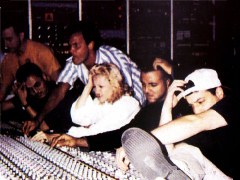
Diary Entry #2 October-November 1991
Madonna returned to New York and we began to work on demos in my apartment. It’s cool working at home. It’s convenient, cozy and there’s no studio time ticking by. Plus, if you wake up in the middle of the night and have an idea, you just go upstairs, turn on the equipment, and go. Our schedule was kind of sporadic in the beginning. I’d work with her for a week and then she’d go off to work ith Steve Meisel on her book (Sex) for two weeks. Occasionally, Madonna would meet with Andre Betts, her co-producer on Justify My Love. While she was away, I would spend time coming up with other tracks or work on Cathy Dennis and Taylor Dayne material. At this point, I wasn’t working on any remixes – just writing. Deeper and Deeper, Erotica, Rain and Thief of Hearts made up the first batch of songs we worked on together. I did the music and she wrote the words. Sometimes I’d give her some ideas lyrically and she’d go: “Oh, that’s good,” or “That sucks.” I remember when I gave her some ideas lyrically for Vogue and she said, very curtly, “That’s what I do.” Essentially, her songs are her stories. They’re the things she wants to say. I did everything upstairs in my home studio: keyboards, bass lines, and vocals. Depending on the mood I was in, I chose from an Oberheim OB8, Korg M3, or a Roland D-50. On the sampling side, the Akai S1000 was our prime workhorse. We used it to sample snake charms for Words and Kool; The Gang horns for Erotica. When it came time to record demos, we laid down a track of SMPTE on the last track of my 8-track Tascam 388 Studio 8 reel-to-reel, which has dbx. Usually we’d put the track down on tracks 1 and 2 in a stereo mix, and then bring Madonna’s vocals in on 3 through 7 – a lead, a double lead, the harmonies, and the background parts. Ninety-eight percent of the time, the vocals recorded in my apartment were the keeper vocals, the ones you hear on the album. It took about two or three days to write a song from beginning to end. Still, sometimes even after they were done we’d want to change the flow of the song and ask the song a few questions: Where should the chorus hit? Should it be a double chorus? Sometimes Madonna would call me in the middle of the night and say “Shep, I think the chorus should go like this,” or “I hate this verse, fix the bass line.” Deeper and Deeper was one of those songs she always had a problem with. The middle of the song wasn’t working. We tried different bridges and changes, but nothing worked. In the end, Madonna wanted the middle of the song to have a flamenco guitar strumming big-time. I didn’t like the idea of taking a Philly house song and putting La Isla Bonita in the middle of it. But that’s what she wanted, so that’s what she got.

Diary Entry #3 December 1991
“I hate them.” That’s what she said to me when we listened to the first bunch of songs we’d recorded. I thought it sounded great because some of the songs had a New York house sound and some of them had an L.A. vibe. “If I had wanted the album to sound like that, I’d have worked with Patrick Leonard in L.A.,” she told me. I got the point pretty fast. Madonna wanted Erotica to have a raw edge to it, as if it were recorded in an alley at 123rd street in Harlem. She didn’t want some light glossy production to permeate her sound. I got back into my usual style of mixing, which is pretty bass oriented, analog, hit-you-lover-the head kind of stuff. When you’re recording songs for Madonna, the attitude is: Either make a song work, or it’s not going to be on the album. That’s that.
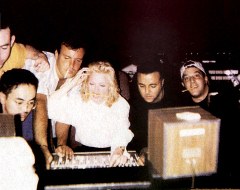
Typically, Madonna would get over to my place by one in the afternoon and we’d work until eighth or nine at night. Improvising vocals took one or two passes and by the time the third pass came around, she’d get on the mic and say “Let’s go.” Madonna has an incredible mind; she locks the melody into her head and memorizes the words immediately. She doesn’t even have to read the words off the paper when she’s singing. The only problems were during sequencing, when we had to do something on the Mac that would take some time. Two minutes into it, Madonna would ask us: “What are you guys doing that’s taking so long!” – and this was just after the first few minutes. We’d tell her to go downstairs and make some popcorn or phone calls so that we could put the song together and she’d do that for about five minutes before screaming: “Come on, guys, I’m getting bored!” I had to keep things moving as fast as possible because it’s one of my jobs to keep Madonna from losing interest in what she’s doing.
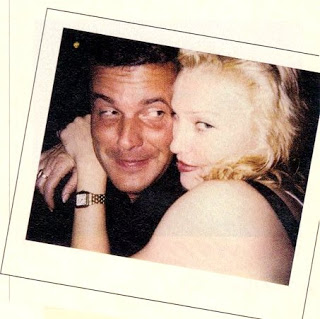
As far as the music went, it was getting a little melancholy by that point. It definitely wasn’t up-and-happy music. Maybe I inspired songs like In This Life and Bad Girl because they were written in a minor key. But Madonna’s stories were getting a lot more serious and intense and she was definitely driving the creative direction of the songs into deeply personal territory.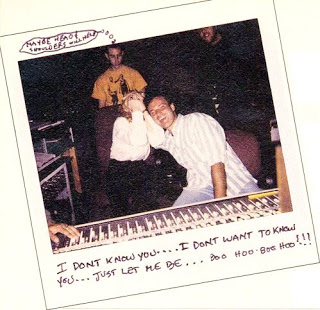
Diary Entry #4 January-February 1992
I spent the Christmas on vacation in Jamaica and when I got back on January 2, I was like “Oh man, I am not ready for this.” There were a lot of intense songs to work on for Madonna, but all I had was this reggae-ish vibe going around in my head. Jamaica had really had an impact on me. I put the vibe down on tape and played it for Madonna, who immediately took to it. Once she got all the lyrics down, the song became Why Is It So Hard. After it was done we thought: “How about if we get a male Jamaican rapper in here to do some stuff on the record?” We found this guy, Jamaiki, who runs a Jamaican record store uptown. He was this big guy with real deep-ass voice. When we were trying to explain the song to him, he just looked at us and said, “Do you have any rum, man?” By the time Jamaiki, was laying down the tracks in my studio, he was dancing around swigging rum and spilling it everywhere. We ended up not using the track because it sounded to rough for the song, but it was a very fun day -completely different. By this point, people had begun to realize that Madonna was recording in my penthouse. All her fans would wait outside, even though it was freezing, just to catch a glimpse of her or take a picture. One particular day, when I walked her down to her car, the lobby was filled with building residents getting the mail, hanging out at the front desk, sitting on benches. It was weird because usually the place is empty. After I walked her outside and ran across the street to get the day’s newspaper, I came back to find nobody there. People were coming downstairs to the lobby just to get a look at her, even if it was out of the corners of their eyes.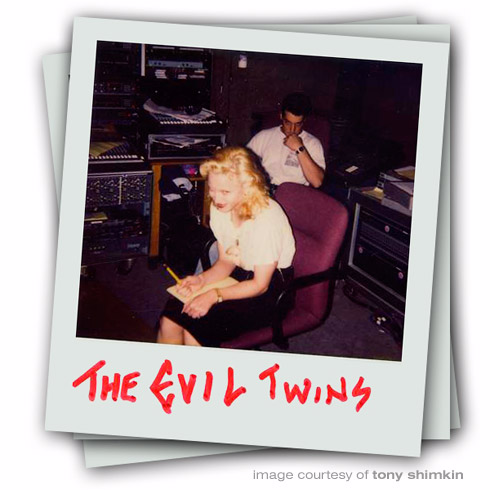
(foto da MadonnaTribe)
Diary Entry #5 March 1992
Now I knew we were doing an album. We had fifteen songs demoed and she liked them all. The last song we did was for the movie, A League Of Their Own. Madonna just started singing a melody over and over again into the Shure SM57microphone while the Mac with Vision was playing strings, organ, piano and a basic rim-shot loop. It sounded really timeless, very nostalgic. I spent all night filling in the verses and the song became This Used To Be My Playground. The day after “Playground” was finished, Madonna went to Oregon to work on her next film Body Of Evidence, with Willem Defoe. This gave me some time to wrap up some work on some songs with Cathy Dennis and Taylor Dayne at Soundworks Studios in New York. The workload had grown quite intense since the beginning of the year and it showed no signs of letting up. Thanks to my manager Jane Brinton, we were able to coordinate all the ongoing projects without a hitch.
Diary Entry #6 May 1992
I met Madonna at Oceanway Studios in Los Angeles to complete the orchestra parts for This Used To Be My Playground. We had to record a string arrangement – something I was excited about but had never done before. Madonna chose Jeremy Lubock to do the arrangements because he had done such a good job with her I’m Breathless Material and came highly recommended. Everything went fine until the point when the orchestra played their parts; we didn’t like what we heard. Madonna and I had to change the whole arrangement, right there in the studio, with a full orchestra sitting there getting paid for taking up space – around $15,000 for three hours, $3000 for every half hour over that. And of course, Lubbock was talking to two people who didn’t know a C from a B natural. The pressure was on. I can only sing the notes I hear at the moment, so that’s what I did. Madonna and I stood there over my little Mac, singing the notes, and Lubbock would go, “Oh, that’s a G; Oh, that’s a B” and that’s how it got done. We completed the session in 2 hours and 58 minutes – two minutes away from another three grand. The last day of recording fell on Memorial day. Madonna wanted to do the lead vocals again, insisting that it would sound better. It did. I finished off some edits before going over to a party Madonna was throwing in her Hollywood mansion.
Diary Entry #8 June-July 1992
The schedule for recording at Soundworks in New York went something like this:
June 08 – Erotica
June 09 – Words, Why’s It So Hard
June 10 – Why’s It So Hard; Thief Of Hearts
June 11 – Thief Of Hearts; Goodbye To Innocence
June 15 – 8-track dumps w/no time-code
June 16 – Deeper And Deeper
And so on, and so on… We transferred everything we had on the Tascam 8-track onto 24-track. I decided to produce the tracks 15 ips with Dolby SR because it has this warm bottom in the bass and I wanted to capture that for Erotica. Plus, I was listening to some of my old remixes, which were recorded at 15 ips, and was amazed at how much more you could feel the music. Compact discs seem to move you one step away from the music, while records put you right in the mix. So I figured that if I overemphasized that LP feeling, it would rub off on the CD, which is the primary format manufactured for American audiences today. Strangely enough, our country can’t get any LP’s of Erotica, while the rest of the world can. On July 7, we did the mixing for Erotic the ode to S & M that Madonna wanted to include in her book, Sex. She felt it should sound the same as Erotica (the song on the album), with just a bass line, her voice and some sensuous Middle Eastern sounds. But by then I had seen the book and had come up with an interesting idea. “You have all these great stories in the book,” I told her, “Why don’t you use them in the song?” I knew that Madonna was developing a 1930s dominatrix look for Erotica, but I didn’t realize how far she was willing to go before I saw Sex. It contained stories authored by her mysteriously dark alter, Dita. Madonna took the book and walked out of the room and didn’t come back until about half an hour later. Suddenly she was on the mic, speaking in this very dry voice. “My name is Dita,” she said, “and I’ll be your mistress tonight.” I knew that the original Erotica would never be the same again, and it wasn’t. The chorus and bridge were changed entirely and the whole psyche of the song became sexier, more to the point. It seemed as if Dita brought out the best in her, actually serving as a vehicle for the dangerous territory she was traveling. Actually, it was the same name Madonna used when she’d stay in hotels around the world. Not anymore. When July 10 came, I felt my thirty-something years hit me full force. It was the day of reckoning – my birthday, and yet I was stuck in the studio with Madonna, Tony Shimkin, and an animal-balloon-twisting clown to celebrate it with. It was fun for about five minutes, until Madonna said, “Shep, you gotta get back to work.”
Diary Entry #9 August 15, 1992, Mo’s Birthday
One of the tracks, Goodbye To Innocence, just wasn’t working. There was something about the song that didn’t grab Madonna, so we had to fix it. I worked overnight in my studio and came back to Soundworks with a brand new bass line that seemed to do the trick. Madonna put on headphones and got ready to lay down the vocals for Goodbye To Innocence. But instead of singing the original words, which were written last year, Madonna started toying with the lyrics, singing the words to the lounge-lizard act staple, Fever. At first we thought: “This is cool,” and it was. It sounded so good that we decided to take it one step further and actually cover the tune. Too bad no one knew the words. What we needed was a copy of Fever if we were going to record it that day. So, Madonna got on the phone with Seymour Stein at Sire Records, and within an hour, we had the lyric sheets, the Peggy Lee version, and the original version of the song in our hands. I was really impressed by how quickly we got it all. That was the last track on Erotica and we finished mixing it just in time to celebrate another birthday – Madonna’s. That night, she had a birthday party on a boat circling Manhattan. Picture about 50 people dancing on a boat with disco blasting out of the portholes and you get the idea. In between dancing and celebrating, I spent the time reflecting on the album. I was confident that it was a great compilation of songs, but I was wondering how people would react to it. It was definitely a different album for her in that it was a dance/pop album, instead of a guitar-laden pop album designed just for top 40. That was a conscious decision on her part because it seemed that the more pop she went, the fewer of her albums people were buying. This time, she’s giving the people what they want.
Diary Entry #10 September – October 1992
After three and a half months of working in the same studio and hearing the same songs day after day, it was a relief to have the album finished. Everything went smoothly except the last two songs, Why’s It So Hard and Words, both of which we had to recall for changes. On September 12, I walked out of Soundworks with the completed master of Erotica in my hands. A month later, I went to the Sex party. The Erotica blitz was about to hit in music, video, and book form and a variety of stars were coming out for the party. Madonna herself surveyed the scene during the midnight hour. I walked over to meet her in the DJ Booth. There was all this wild stuff going around us: people tattooing one another, couples simulating sex – it was crazy. And when I went to talk to Madonna, who was in the middle of it all, our conversations turned to music. For all the multimedia extravaganzas that were braying for her attention, it was still the music that mattered and it was the record that we fawned over. I realized that no matter how far I’ve come, I still feel the same way that I always did. And then she put the handcuffs on me. NOT!
